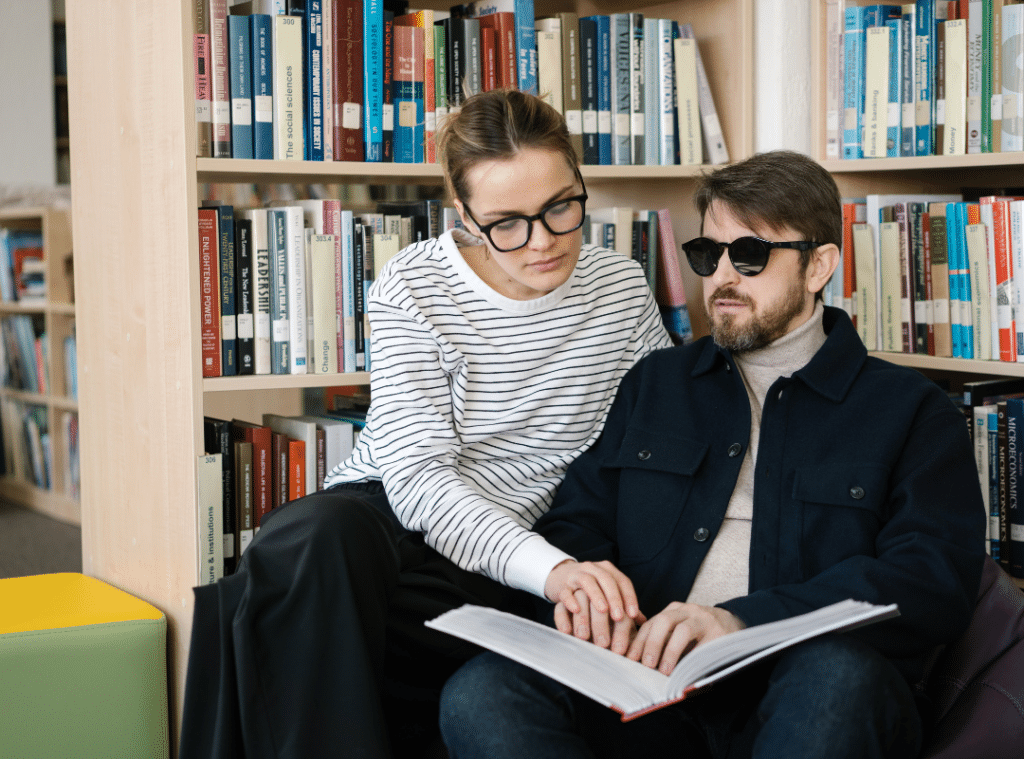Discover how sensory activities for blind adults can transform everyday moments into meaningful experiences at Lakeview Senior Living in Lincoln City, OR. From aromatherapy to texture exploration and music engagement, these activities are more than hobbies—they’re essential tools for fostering independence, building connections, and enhancing emotional well-being.
Whether you’re a family member seeking ways to engage with a loved one or a caregiver looking to enrich daily routines, these sensory-based experiences offer practical solutions. Plus, with easy access to group-friendly restaurants near Lincoln City, OR, and relaxing environments like restaurants in Lincoln City on the water, seniors can enjoy social outings that further stimulate the senses.
Explore more below and see how Lakeview Senior Living creates an inclusive and engaging environment for all.
Visit us at Lakeview Senior Living.
Why Sensory Activities Matter for Blind Adults
Sensory activities for blind adults aren’t just fun—they’re essential for improving mental, emotional, and even physical health. Engaging the senses of touch, smell, and hearing allows individuals with visual impairments to experience the world more fully. Activities like aromatherapy, tactile games, and music therapy stimulate the brain, promote memory retention, and reduce stress.
At Lakeview Senior Living, residents are encouraged to participate in experiences that empower them to interact with their environment confidently. Incorporating creative art activities and self-expression through multisensory projects deepens social bonds and gives seniors a renewed sense of purpose.
Aromatherapy: Calm Through Scent
Exploring Aromatherapy Options
Aromatherapy is one of the most impactful sensory activities for blind adults, activating the limbic system to improve mood and mental clarity. Using essential oils such as:
- Lavender for calm
- Eucalyptus for focus
- Citrus for energy
- Peppermint for clarity
- Rose for emotional comfort
…can lead to better relaxation and even reduce symptoms of anxiety or depression.
Combining aromatherapy with personalized health care plans makes this experience more meaningful and customized to each resident’s needs.
Techniques for Aromatherapy
There are many ways to enjoy aromatherapy:
- Diffusing oils in a shared space
- Using scented sachets
- Incorporating oils into guided massage
- Scent-based memory games
These methods invite residents to relax, reflect, and reconnect with themselves. For added benefit, you can pair aromatherapy sessions with nutrition education—consider learning more about nutritional needs for older adults.
Tactile Games for Social Fun
Tactile-based games are central to creating inclusive experiences for visually impaired adults. They offer fun, mental stimulation, and encourage social bonding. Great options include:
- Braille Scrabble and tactile chess for mental sharpness
- Texture identification boards for sensory exploration
- Sensory storytelling games for creativity
- Adapted card games with textured cards
- Group games that involve touch and teamwork
You can even bring nature into the mix—activities like identifying natural textures from quail eggs or pinecones can add a new dimension to tactile play.

The Power of Sound in Memory & Emotion
Music Therapy and Memory
Music is a universal language, and one of the most effective sensory activities for blind adults. Sound triggers memory, emotion, and joy. Encourage seniors to:
- Build playlists from different life periods
- Share stories related to songs
- Join group sing-alongs
- Attend live acoustic performances
Whether you’re hosting a small drum circle or karaoke, music encourages participation and uplifts spirits.
Nature Sounds for Relaxation
Outdoor soundscapes can also stimulate the auditory system and provide a peaceful atmosphere. Try playing:
- Ocean waves
- Birdsong
- Wind through trees
- Rainfall
These sounds offer mindfulness benefits and can be paired with meditative breathing. Share your favorite nature sounds as a group to foster shared experiences.
Guided Sound Reminiscence
This activity pairs recorded sounds with storytelling, such as:
- Sounds from a childhood home
- Clinking dishes from lunch in Lincoln City
- Street musicians from vacations past
Guided reminiscence strengthens emotional connections and helps seniors recall vivid life moments, creating opportunities for bonding in group settings.
Exploring Texture: Tactile Variety Matters
Using textured objects helps build awareness and fine motor skills. Create a sensory table with:
| Soft | Rough | Smooth |
| Cotton | Sandpaper | Glass |
| Felt | Tree bark | Marble |
| Silk | Burlap | Ceramic |
Residents can explore these in group games or craft sessions, enhancing their sense of touch while expressing themselves creatively.
Creative Cooking: Taste, Texture, and Togetherness
Creative cooking engages multiple senses—especially taste, touch, and smell. It also promotes independence and provides important life skills. Activities can include:
- Exploring food textures (e.g., soft avocados vs. crunchy cucumbers)
- Tactile measuring and stirring
- Herb and spice identification by smell
- Safe, adaptive tools for chopping and cooking
- Group meal prep and tasting
Residents might enjoy preparing their own lunch in Lincoln City, or even discussing favorite dishes from Lincoln City eating places, encouraging conversation and reminiscing.
Community Engagement and Group Outings
Activities That Connect
Building community through shared sensory activities for blind adults strengthens social ties. Try:
| Activity | Description | Benefit |
| Group Aromatherapy | Shared scent discovery sessions | Emotional bonding |
| Tactile Crafts | Collaborative textured art projects | Creativity and expression |
| Musical Games | Drumming or singing in a circle | Fun and coordination |
Dining as a Sensory Event
Eating out becomes a full sensory experience. Residents can explore group-friendly restaurants near Lincoln City, OR, where they can enjoy unique tastes, ambient sounds, and friendly service. Places like Kyllo’s Seafood & Grill—one of the best restaurants in Lincoln City on the water—make perfect destinations for dining outings that stimulate multiple senses.
Sites like Oregon Coast Visitors Association offer resources on accessible dining and experiences along the coast.
Ready to Reconnect Through the Senses?
Participating in sensory activities for blind adults isn’t just therapeutic—it’s transformative. At Lakeview Senior Living, we recognize the importance of sensory engagement and its role in building confidence, fostering friendships, and enhancing quality of life.
With personalized activities like aromatherapy, tactile games, music therapy, and creative cooking, we bring enrichment to everyday life. Plus, our vibrant community setting near Lincoln City, eating places, and relaxing restaurants in Lincoln City on the water make for memorable group outings.
📞 Ready to explore your next chapter with us? Call Lakeview Senior Living at 541-994-7400 or schedule a Tour to see firsthand how engaging activities and compassionate care come together.
Let’s awaken the senses—and the spirit—together.
How Do The Costs Of Moving Into A Quality Senior Care Community Compare With The Costs Of Staying At Home?Compare The Costs of Senior Living vs Staying at Home
Frequently Asked Questions
What are sensory activities for blind people?
Sensory activities for blind people focus on engaging the senses of touch, hearing, smell, and taste. Examples include listening to music, exploring textured objects, cooking with aromatic ingredients, or participating in tactile games like puzzles with raised designs. These activities help improve cognitive function, promote relaxation, and encourage creativity. They also provide social interaction and meaningful engagement, which supports overall emotional well-being.
What are the best sensory activities for adults?
The best sensory activities for adults are those that stimulate multiple senses while being enjoyable and accessible. Popular options include gardening, aromatherapy, cooking, yoga, and listening to different types of music or nature sounds. These activities reduce stress, enhance memory, and improve focus. Sensory activities also help adults stay active, connected, and engaged in daily life.
What are fun things blind people can do?
Blind individuals can enjoy many fun activities that emphasize touch, sound, and movement. They may participate in music classes, storytelling, adaptive sports, cooking, or board games with tactile adaptations. Outdoor experiences like hiking with guides, swimming, or tandem biking are also great options. These activities encourage independence, socialization, and a strong sense of enjoyment.
What are the sensory activities for adults with intellectual disabilities?
Sensory activities for adults with intellectual disabilities often include hands-on, calming, and interactive experiences. These might involve playing with textured materials like clay or sand, engaging in music therapy, using scented oils, or practicing movement-based activities such as dance. The goal is to promote relaxation, build communication skills, and enhance focus. These activities also support emotional regulation and foster positive social interactions.








